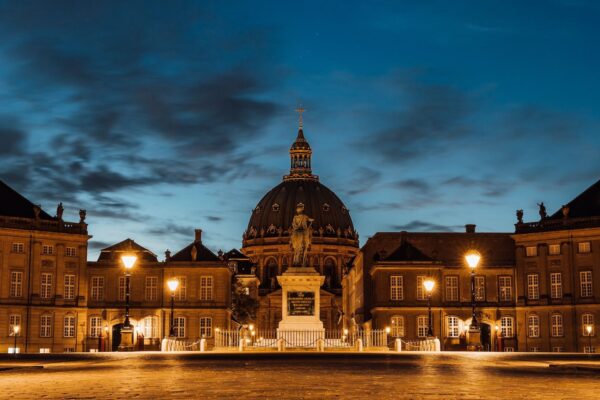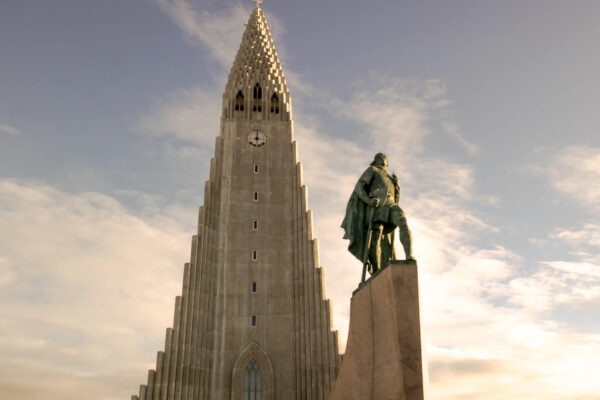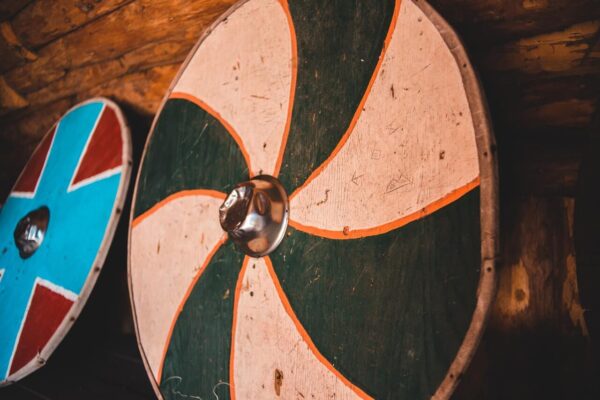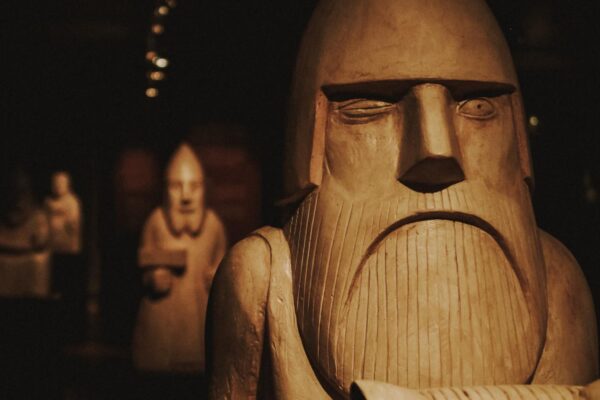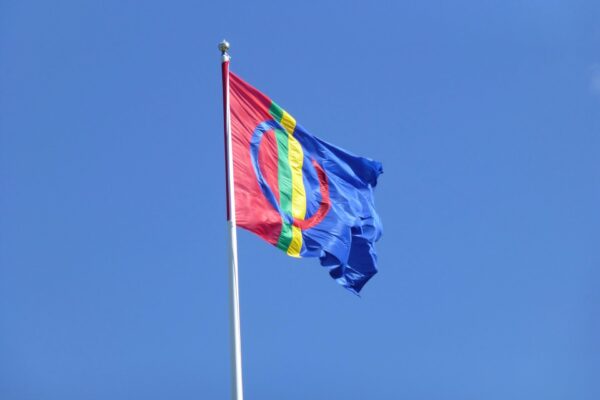Did you know that Finland has only been an independent country for just over 100 years? You can read a summary of how this came about and what the northern European country has gone through on the way to independence and beyond in our timeline here!
The history of Finland is the story of a long road to independence, as it is characterised by territorial disputes and changing power relations. It also shows the remarkable development that the country has undergone to become a progressive and democratic state – because Finland was structurally disadvantaged for a long time.
The country was already populated after the last ice age, and in the following millennia the Finnish population consisted of four groups: Finns, Tavastians, Karelians and Sami, who populated the land in loose relationships, hunted and farmed. This changed when the Christianisation of Finland by its Swedish neighbour began in the 12th century – and Finland fell under Swedish control for around 700 years, which is why part of Finnish history is closely linked to the history of Sweden.
After numerous wars between Sweden and Russia, from which the inhabitants of Finland suffered the most, Finland finally became an autonomous territory within the Russian Empire in 1809. But even this autonomy was fragile – there were repeated attempts to incorporate Finland into the Russian Empire.
It was only after the Russian revolutions in 1917 that bourgeois forces seized the opportunity for final independence and declared the country’s independence on 6 December. Further wars followed – civil war and world war – but with increasing orientation and cooperation with its Nordic and European neighbours, Finland rapidly developed into the successful and modern welfare state we know today.
We have collected some important historical events in our timeline so that you can get an overview of Finland’s history.
From approx. 10,000 BC: Finnish Ice Age and Stone Age
Suomusjärvi culture & Komsa culture: Finland’s earliest settlers
The oldest traces of civilisation in present-day Finland date back to around 8500 BC, after the end of the last European Ice Age. Where exactly these settlers in the south came from has not yet been clarified – the language of the Suomusjärvi culture is also unknown. The Komsa culture lived in the north of the country, migrating from neighbouring Finnmark and the west. The population was nomadic and consisted of hunters and gatherers. These early inhabitants were probably ancestors of the Sami.
Neolithic period: pottery, battle axe and Kiukainen culture
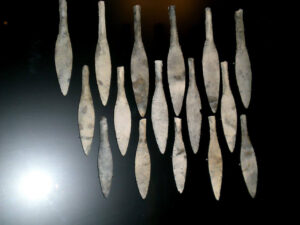
In the following millennia, more and more new cultures migrated to what is now Finland. This is how the ridge pottery culture finally arrived in Finland. Early Finno-Ugric languages were spoken.
Around 3200 BC, settlers of the battle-axe culture from the Baltic region moved to Finland, who spoke an early offshoot of the Indo-European language. The combination of these cultures gave rise to the Kiukainen culture, which was to be the last Stone Age culture in Finland.
1700-500 BC: Bronze Age
The Neolithic revolution reaches Finland’s coasts

The Bronze Age began in what is now Finland around 1700 BC. Finds document the use of metal artefacts, but this probably spread slowly from the south-west coast.
At the same time, the Neolithic revolution began on the coast and people settled down to practise agriculture and animal husbandry. In the north and east, the inhabitants of Finland continued to be hunters and gatherers.
500 BC-400 AD: Iron Age & Antiquity
Trade with Europe & migration
Around 100 BC, Finland began trading with Central Europe, the Roman Empire and Novgorod in the east. Due to its location on the Baltic Sea, Finland had good contact with the neighbouring areas. This is also how Finland first came into contact with the Christian faith after the turn of the millennium.
800-1025: Viking Age
First Swedish influence
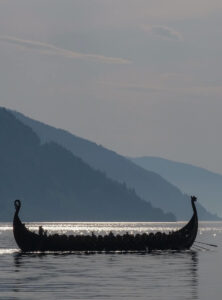
During the Viking Age, the Finnish coasts were not only the scene of trade, but also of raids by warlike seafarers from neighbouring regions. Remains of countless defences can still be found on the Finnish Baltic coast today.
In addition, the inhabitants of the Finnish coasts had to pay tribute to the Svear, the inhabitants of the Swedish east coast.
1155-1808: Under Swedish rule
From 1155: Conquest & Christianisation of Finland by Sweden

According to legend, King Erik I of Sweden personally proselytised Finland as part of the First Crusade, but the missionary work was actually carried out by merchants, warriors and missionaries working together. Due to earlier contacts and settlers, Christianity was already known and had its first followers, but many Finns continued to cling to their pagan customs. In addition, the Orthodox faith penetrated from Novgorod in the east.
The Catholic Church finally had its greatest success in the middle of the 13th century in the course of Birger Jarl’s conquests. Finland officially became part of Sweden for the first time in 1284. Finland’s first city, Turku, was founded and the local cathedral was consecrated in 1300.
14th and 15th centuries: Formation of the nobility
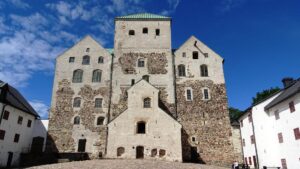
As a Swedish “Ostland”, Finland was primarily characterised by the disputes between Sweden and Novgorod (later part of Russia) over Karelia. Finland was governed from Stockholm and the only official language was Swedish.
The existing cities of Turku and Vyborg in the east were expanded, and monasteries, stone churches and imperial castles were built throughout the country. The lords of these castles and other recruitment mechanisms ensured that a nobility was also formed in Finland. In 1362, a delegation from Finland was allowed to take part in the royal election in Uppsala for the first time.
16th & 17th century: Reformation and the Swedish period of great power
In the 16th century, the Vasa dynasty took over power in Sweden and worked to turn Sweden into a great power. At the same time, the Reformation spread to northern Europe, where it supplanted Catholicism. In 1548, the reformer and creator of the Finnish written language, Mikael Agricola, translated the New Testament into Finnish for the first time. The result was an upswing in Finnish-speaking culture.
In the 17th century, Sweden rose to become a great power and expanded its empire to include many areas in the Baltic Sea region. Strict centralisation brought Finland into line with Sweden, and the road network was expanded and improved. Finland was divided into five provinces, and the highest offices continued to be held mainly by Swedes.
1700-1721: Great Northern War & Time of the Great Strife
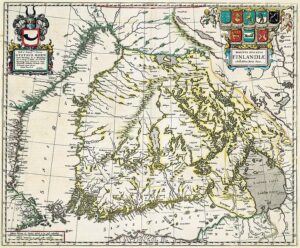
With the rise of Russia, Sweden’s dominance in the Baltic Sea region came to an end – and Finland was once again the cause and theatre of battles between the two countries. The greatest turning point was the Great Northern War from 1700 to 1721, in which Sweden initially faced an alliance of Russia, Denmark-Norway and Saxony-Poland, with even more countries later becoming involved.
Although the Swedish King Charles XII initially remained victorious, the tide turned in later years. The population of Finland not only made up a large part of the Swedish army, but was now also exposed to the far-reaching consequences of the Russian offensive. This period of occupation, devastation and oppression of Finland by Russia between 1714 and 1721 is known as the “Great Disturbance”.
1719-1772: Liberty period
After the end of the Great Northern War and the subsequent end of Sweden’s position as a great power, there were changes and redistributions of power throughout the Swedish Empire. The weak position of the new Swedish Queen Ulrika Eleonore led to a flourishing of the estates and nobility, including in Finland.
Finland was still characterised by the wars between Sweden and Russia, and there were also numerous economic and social problems. Nevertheless, the period of freedom was a period in which Finland not only acted more independently, but was also recognised as an independent region throughout the empire.
Russian-Swedish War 1808-1809
As early as the end of the 18th century, dissatisfaction with the autocratic rule of the Swedish King Gustav III spread among some high-ranking “Finnish” citizens, which is why some of them moved to Russia. After Russia took part in Napoleon’s continental blockade against Sweden’s ally England, Russia sought control of the Baltic Sea to protect St. Petersburg and invaded Finland on 21 February 1808.
The Russian army was vastly outnumbered by the Swedish army and took territory after territory. Although the advance was briefly halted by England’s entry into the war, an offensive in March 1809 shifted the tide of war from Finland to Sweden. In August of the same year, the main Swedish army was defeated at the Battle of Piteå and the Swedish defeat was sealed. An armistice was signed on 2 September.
1809-1917: Autonomous Grand Duchy of Russia
1809: Finland becomes a Grand Duchy of Russia
Following Sweden’s defeat in the Russo-Swedish War, the Peace Treaty of Frederikshamn was signed on 17 September 1809. It ended centuries of Swedish rule over Finland and Finland became an autonomous Grand Duchy within the Russian Empire. Helsinki became the new capital. This change, including a new position, played a major and important role in the development of a Finnish national consciousness and Finnish independence.
19th century: First national ideas & autonomy under Tsar Alexander II.
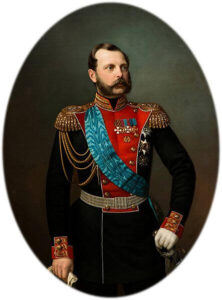
The first nationalist ideas began to take root in Finland towards the end of the 18th century. These were provoked above all by Swedish arrogance, as Finnish was still not an official language and was consistently treated in a derogatory manner. This was opposed by scholars and historians who were concerned with an independent Finland – they paved the way, for example, for the Kalevala, the national epic of the Finns.
With the change of rule and the newly gained autonomy, Finland found itself in a new situation. Under the Russian Tsar Alexander II, who ascended the throne in 1855, a period of opening and reform began. Finland also benefited and gained even more autonomy – for example, the Finnish mark was introduced in 1860 and an independent Finnish economic area was created. In addition, the Finnish Diet was convened in 1863 for the first time in more than 50 years, giving political society a boost.
1899-1914: Periods of Russification
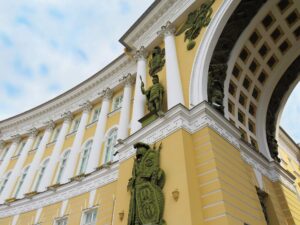
However, the fragility of Finnish autonomy was demonstrated under the last two Russian tsars at the end of the 19th and beginning of the 20th century. Under Tsar Nicholas II in particular, there were repeated periods of Russification, as the apparent Finnish autonomy with special privileges stood in contrast to Russian grand nationalism and caused resentment in Russian society.
In 1899, Finnish autonomy was largely restricted by the February Manifesto – for example, Russian was introduced as an official language and the Finnish army was disbanded. Although the tsar withdrew some of the measures after the Russian Revolution of 1905, making the Finns the first European country to introduce women’s suffrage in 1906, for example, there were repeated restrictions and Russification in the years leading up to the First World War – and the Finnish independence movement grew steadily.
1914-1918: World War I & Russian Revolutions

The First World War largely took place without Finnish participation, as Finland was not a place of war and soldiers only fought voluntarily. Nevertheless, it was felt in the country – on the one hand, there were supply problems from 1916 onwards and, on the other, the martial law in force on Russian territory also led to increased censorship and restrictions on freedom in Finland. This led to a growing anti-Russian independence movement throughout Finnish society.
The chance for independence that Finland had been waiting centuries for came in 1917. After the Russian monarchy came to an end in the February Revolution and the communist Bolsheviks seized power in the October Revolution, strikes and sometimes bloody uprisings by the workers’ movement also took place in Finland. The bourgeois Finnish government took advantage of the chaotic conditions and declared Finland’s independence from Russia on December 6, 1917.
The 20th & 21st century: Finnish Independence
1917-1919: Independence & Finnish Civil War
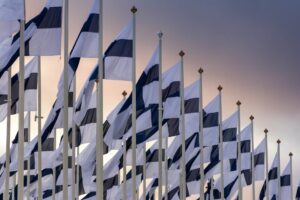
Finnish independence was formally confirmed by the Russian government on January 4, 1918. However, this did not calm the situation in Finland, as the bourgeois Whites and the socialist Reds were still opposed to each other. The formation of an army by the government was seen as a provocation and means of repression by the Socialists, who launched an attempted coup and civil war on the evening of January 27.
Initially, the numerically superior Reds were able to celebrate great successes, bringing large parts of southern Finland, including Helsinki, under their control. All that remained for the members of the government was to flee to Vaasa in western Finland, from where they planned a counter-offensive. Thanks to their better discipline and training, they were able to put down the uprisings and win the civil war in May – fittingly, the Finnish flag was officially introduced on May 29.
Initially, the bourgeois government wanted to introduce a monarchy in Finland. They wanted to model themselves on the German Empire, which had helped Finland out in the civil war. After the German November Revolution, however, these plans were changed and Finland became a republic with a strong president. The Finnish constitution came into force on July 17, 1919.
1920: Impending conflict over the Åland Islands
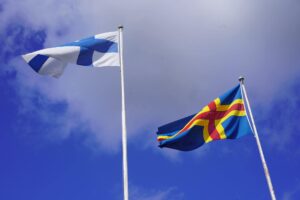
After the end of the civil war on the Finnish mainland, the beginning of a new conflict became apparent. The Swedish-speaking Åland Islands, which had been part of Finnish territory since 1809, sought a return to Sweden. The Swedish proposal for a referendum of the inhabitants was strictly rejected by Finland.
Instead, an autonomy law was passed in May 1920, as a result of which the League of Nations intervened and Finland agreed in 1921. Since August 11, 1922, a guarantee law has regulated the autonomy of the islands, giving the inhabitants of the Åland Islands special rights – including their own provincial government, parliament and flag. The inhabitants are also exempt from compulsory military service.
1939-1945: Finland in the Second World War
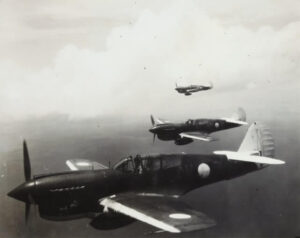
Unlike in the First World War, Finland was involved in the events of the Second World War. Although a non-aggression pact had been concluded with the Soviet Union in 1932, this was terminated on November 28, 1939 after an alleged Finnish attack on a Russian village. Two days later, the Soviet Union launched its attack and the Finnish Winter War began. The reason for this was Finland’s refusal to cede territory in the east of the country.
Despite being outnumbered, the Finnish army’s familiarity with the terrain and weather slowed down the invasion of the seemingly overpowering enemy and even forced some of the Soviet soldiers to retreat. Nevertheless, it was not possible to make a final stand against the Soviet forces, which meant that Finland had to accept territorial losses in the east of the country.
After Germany’s attack on the Soviet Union, Finland also resumed fighting against its neighbor to the east. The so-called Continuation War was only intended to ensure that the former Finnish territories could be regained; Finland did not participate in the Third Reich’s further eastern policy. An armistice with the Soviet Union followed in September 1944, after which Finnish soldiers pushed the Wehrmacht out of northern Finland in the destructive Lapland War.
Although Finland was the only ally of Germany that was allowed to retain its independence and constitution, the country still had to accept great losses. In addition to the numerous fallen soldiers and civilians, destruction throughout the country and loss of territory, high reparations had to be paid.
1945-1990: Reconstruction after the Second World War
After the end of the Second World War, Finland was still in a tense situation. A peace treaty was signed with the victorious powers in 1947 and a friendship treaty with the Soviet Union in 1948. Finland was still closely tied to its neighbour to the east, which is why it decided not to participate in the Marshall Plan.
During the Cold War, Finland remained neutral and did not join NATO or the Warsaw Pact, thus assuming a mediating role. At the same time, cooperation with its Nordic neighbors was promoted, with Finland joining the Nordic Passport Union in 1954 and the Nordic Council in 1955. The economy was also oriented towards its Scandinavian neighbors and a successful welfare state was established, which was quickly transformed into a modern society.
Since 1990: Reorientation towards the West

The collapse of the Soviet Union in the early 1990s led to a severe economic crisis in Finland, from which the country was able to recover quite quickly.
Now the focus turned to the West – in a referendum on October 16, 1994, 56.9% of voters approved accession to the European Union, and Finland officially joined the EU on January 1, 1995. In 1999, Finland was one of the 14 founding members of the euro, which was introduced as the official currency in 2002. Also new was the constitution, which came into force in 2000 and significantly weakened the power of the president.
Together with its neighbor Sweden, however, Finland remained neutral, with both countries refusing to join NATO. This changed in spring 2022 with the Russian invasion of Ukraine. For the first time, a majority of the Finnish population was in favor of joining the Western defense alliance. In June 2022, the two Nordic countries submitted a joint official application to join NATO. Finland officially joined NATO on April 4, 2023.
